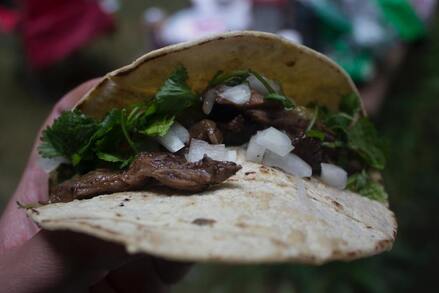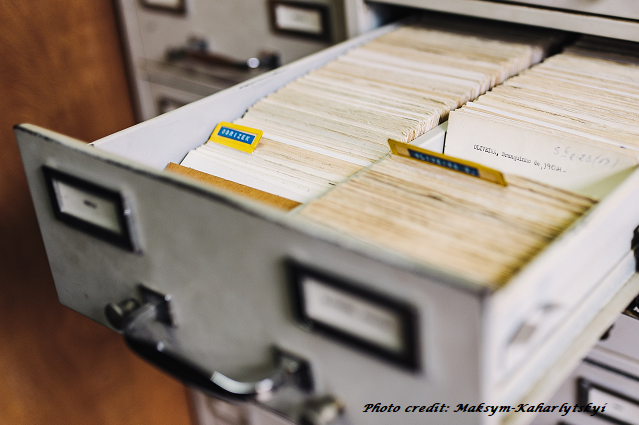|
This message is designed to be a simple, practical application of the scriptures for the first two Biblical Feasts, which are also part of what are commonly called the Spring Feasts. We are going to show what is done and commanded in scriptures, and how we apply those in our lives and home. We hope this will help you to simplify your feasts and enjoy them in pure shalom that will fill you to over-flowing. This blog will speak on Passover and Unleavened Bread. First, let me say, Passover and the Feast of Unleavened bread are TWO DIFFERENT EVENTS. We need to say that right off the bat because many people believe the entire upcoming Feast time is considered “Passover.” It is not. This is a tradition of Judaism. It also seems to make it easier for public calendaring, which you can see on the standard printed Gregorian calendars. In fact, there are THREE events coming up in this spring feast season and a fourth event coming up closer to the start of summer season here in the United States: 1) Passover 2) Feast of Unleavened Bread 3) First Fruits 4) Shavuot or Pentecost We will be only covering the first two for now. When we celebrate Passover and Unleavened Bread We follow the Hillel 2 calendar for positioning our time of celebration. We believe that we are to be one body, and that is the biggest reason for following the current, standard Hebrew calendar. Is it because we believe in following the Jews and their traditions? No. It is simpler than that - the majority of people who celebrate Pesach follow this calendar. For information as to more explanation why we do, you can read our free e-book on our parent ministry website at this link: http://www.shofarproductions.com/who-made-you-lord-of-the-calendar.html That being said, we then use what is written in Exodus 12. The calendar we use can be downloaded at www.hebcal.com and it will be marked with which Gregorian date of the year the 1st of Nisan occurs. From there we can follow the days mentioned in scripture. For example, Exodus 12:6 says that the 14th day of the first month of the Hebrew year (The Month of Nisan) would be the day that the lamb was killed during the years of sacrifice. It was killed at twilight, before sundown. Prepared, and roasted (verse 8). Then, after sundown on the 15th day of the month, the lamb was eaten with bitter herbs and unleavened bread, leaving no leftovers. Verse 11 in Exodus 12 says they ate with their loins girded (dressed to travel), shoes on, staff in hand. They ate quickly, didn’t dally or linger for too long. Thus, they would be ready to leave the moment Yahweh said they needed to load up and go, in haste. Then they would be eating unleavened bread every day for six additional days – a total of seven days. This means the timing is from sundown, the 15th of Nisan to sundown on the 21st of Nisan. The first and seventh days both are holy days where no work is done except that which needs done for meals. Pretty simple instructions which we can each use as a model for honoring this time of year. Verse 14 says we are to celebrate these feasts for a memorial. In addition to this, we are told three times to do it forever, verses 14, 17, and 24. Décor Exodus 12:7 describes what Yahweh’s people were to do after slaughtering the lamb: using hyssop as a paintbrush, brush blood on the lintels and doorposts of each home. This would mark their homes so that the angel of death would pass them by. As a reminder to ourselves of the blood on the door posts from ancient times, we have a deep red fabric which we take and hang over the top (lintel) of the door frame of our front door. The sides of that fabric drape down the door posts on each side. I would love to hang this on the outside of our home, but we do this on the INSIDE because our home is white, and we don’t have a covered porch. I have had such difficulty with fabrics bleeding in the last 10-plus years even after being washed. I don’t want it dripping down the siding of the house! One day, I hope we can hang it on the inside for ourselves AND on the outside as a demonstration for others. I have spoken with families over the years who do this, too. On their main entrance, and some do it on each bedroom door for the children, too. It gives the children a visual of how Yahweh’s people were protected and covered during that time of the Exodus when the angel of death came. This can be shared as an illustration of how Yahweh continues to protect YOUR children NOW – giving personal experiences when He has done so for them during the year. As they grow up, they will have a witness of how Yahweh is there for them. He isn’t some vague provider in the shadows. This makes it real for our children and grandchildren. Have there been times when the family had accidents that should have been worse? Or in which someone should have been seriously hurt? Have there been miracle healings in their lives? Was their conception or birth a miracle? Did Abba stop them from making a dangerous decision or mistake? You can even have them write these down in their journal – adding new experiences of protection and provision each year. If you have been helping them over the year to already write these down as they happen, you can use this time to sit and have them re-read these experiences out loud. This makes a great time for you to discuss with the kids all about the Exodus, too, as commanded in Exodus 12:26-27. We have a walking stick we also place in the corner of our home by the front door. Again, as a reminder of the haste the people made in the Exodus. It also reminds us to always be ready for when Yahweh calls us to move. We have had this experience where He has instructed us to leave a state we were living in and settle somewhere new - our own mini-exodus! Another item of décor we would like to have one day is a big stuffed lamb. A cute image of how the family had to care for that lamb, love it, feed it, and such before using it for the sacrifice. Cleaning out the Leaven Many people start months before Passover cleaning out the leaven. They will begin cleaning out every nook and cranny of any place which might be hiding crumbs of leavened product. Some will even wash walls, ceilings and what not before Passover begins because they believe they must literally get out ALL the microscopic leaven, or yeast, from their homes. Here’s the catch. It is impossible to get out all the yeast from ANY home, ever. It exists in our air, 24/7, 365. It’s just there. Is it a nice idea to do your spring cleaning this time of year? SURE! Why not? It’s spring! And with the nicer weather coming, it would be nice to start this lovely time with a sparkling clean home. I often start in January organizing, reorganizing, and even purging things from our home. It helps me stay busy in winter while I would rather be outside working in the gardens! It also gives us a chance to get rid of piles of accumulated junk and paper that we just knew we would "need" some day! To me it is a great time to even give your home a new look, if you want, by rearranging furniture, washing curtains, or even adding a new piece or two! However, there isn’t a need to stress yourself over every tiny particle. There is no commandment to sterilize your home of leaven. https://science.howstuffworks.com/innovation/edible-innovations/sourdough2.htm What we do: I have a fairly frugal mind-set. I have for a long time. I do not like to waste. So, I do not like to throw out food that contains yeast, if I can prevent it. So, any products which contain yeast as an ingredient, which is very few for us, we will use up throughout the week or two before the Holy Days begin. As an example of this, I had a bag of homemade breadcrumbs in the freezer which needed to get used right away. Last week we ate meatloaf and hamburgers. Each used a little of those breadcrumbs to hold them together. But we still had half a bag left! This week, two nights in a row we made meals with ground chicken – hamburgers again and Italian Wedding Soup which has little meatballs in it. Breadcrumbs are now gone. Another thing we pay attention to in our home is homemade bread products which contain added yeast or homemade sourdough starter. Sourdough, the old fashioned or ancient form of yeast, is what is truly meant as leaven in scripture on this topic. If we have any on hand, we use it up. Before the last week prior to Passover, we use the sourdough starter to make crackers, bagels, soft pretzels, pitas, or any number of other delicious treats. If i wait to long to get started on using it up, it may feel like we are eating a LOT more bread product than the rest of the year! Will we dust and vacuum and clean the house? Of course, we will. Wouldn’t we do that before any holiday or celebration? Yet it isn’t a stressful event for me because I take into consideration simply what Yahweh told His ancient people. Now is a great time to mention those easy matzah crackers you can purchase in the grocery stores or online. They are wonderful, make life easy so that you don’t need to bake unleavened bread from scratch every single day. We buy some when we can find them and enjoy them with peanut butter, dips, spreads, etc. The question always arises about the label that says “Not Kosher For Passover.” Many believe you MUST ONLY buy those marked "Kosher for Passover." When these are labelled “Kosher for Passover” it simply means that a rabbi certified that batch was made and baked before the 18 minute cutoff rabbinics has declared is the time it takes natural yeast to leaven the dough. We do not follow this rabbinic tradition. Yeast begins to multiply at different rates dependent upon conditions such as temperature, moisture levels, natural sugars in the flour, and such. This is merely a rabbinic rule or law, and is not scriptural. You can buy whichever box you choose to. They DO make things a bit easier. Foods we serve for our feast: - Lamb, when we can find it and afford it, otherwise we have some other delicious feast meat - Charoset made from chopped apples and walnuts. Some also add wine and allow it to marinate over night. Other additions can be raisins or coconut. - Unleavened bread, Matzah, lefse bread, na’an, tortillas, or other unleavened flatbread. - Hummus with horseradish (which is a bitter herb), roasted peppers, garlic, and olive oil; goes GREAT with matzah or other unleavened breads. - Bitter herbs – often these are any form of early greens which can be picked or purchased. We currently have some delicious wild mustard greens growing in our garden. Some other suggestions would include: Dandelion Collards Turnip greens Escarole Green onion Beet greens Horseradish Kale Chicory Celery Mustard Parsley We do not kill our own lamb, and we also do not eat a whole lamb because there are only two of us. We buy lamb cuts when we can find them, otherwise we have been known to cook Cornish hens, a whole chicken, even a turkey. Something special we might not cook very often through the year. Activities we enjoy during the Feast of Unleavened Bread: The Bible states there are two days of Holy Convocation. We take those days to rest from our jobs, and I choose not to do any yard work or heavy household work as well. The 1st and 7th days are the only two we take off completely. UNLESS there is a Shabbat in there as well. Of course, we ALWAYS rest on Shabbat. Other than the FIRST and SEVENTH days, we continue working our jobs. Yet we take a few minutes at dinner to remember the Exodus, the sacrifices they made, and the harsh travels wandering around the wilderness until they entered the promised land. It is during this time we honor them by partaking of our daily unleavened bread. A few things we also enjoy doing together: - Watching the old movie, The Ten Commandments. This is an annual tradition for us – although it contains some artistic license, it is still a fun thing we enjoy with some yummy snacks or treats. - Watching “The Passion of the Christ.” This one always makes me cry at how much Yeshua was willing to give for ME. - Reading of the Exodus as commanded in scripture. For this we often take the time to send text message reminders to our children about certain messages contained in the story. We cater these to their level of spirituality – our grown kids range from partial attendance in church to agnostics to world traveling missionaries. As our grandchildren grow, we treasure the times we will be able to share with them as well in this same fashion. When schedules permit, because none of our family celebrate the Feast days, we also call and talk with them of this time of year. We try to not be over-bearing or over-whelming in our conversations, simply try our best to share what we are doing. A simple way to accomplish this would be to pray first, then call and somewhere in the conversation mention that you are having a feast that evening. We often get a reply something to the effect of, “Why? It isn’t Thanksgiving!” Just roll with it by replying, “No, it’s Passover and the Feast of Unleavened bread so we are having a dinner like Moses did with HIS family when he left Egypt.” Sometimes this opens a door to talk more and remind them of our blessed time of year. . . other times it slams doors. Try to go with the flow and be loving and gentle. Should we follow all the Jewish traditions for the Passover Seder? Should you? This is a question that implies it is a command to do the Haggadah and the Seder plate with all its accoutrements. It is NOT. This is Jewish tradition. Might it be nice to do as a cultural experience? That is up to you as a family or individual to decide. We had done it before and shared it with some of our family members. We choose not to any longer as it is not scriptural. Additionally, much of it is related to Kabbalah. We do not follow nor recommend Kabbalah as it is mysticism. There are MANY traditions for Passover that are merely that, traditions. This is why we have taken this message simply back to scripture and shared our own personal activities we do to keep us focused on the events of the ancient times. Shalom Scriptures for additional reading: Exodus Chapter 12 Leviticus 23 Numbers 28 Deuteronomy 16 Audio Blog Now AvailablePassover 101
Comments are closed.
|
Searching for Something?NOTE: Comments may be closed on most posts. In lieu of comments we asked that you use our contact form, or contact us by social media.
Partner with our work with a donation of $10 or more to help spread our message of truth and hope for all women. Thank you.
Lead Author (Bio)Yehudit (Judith) Associate Author
Jim, (Judi's husband), has Sephardi Jewish ancestry and is a minister and head of Shofar Productions. Jim was a denominational pastor, hospital chaplain, and former director of a non-profit community organization. Archives
July 2022
Categories |
Services |
Ministry
|
|
|
Compensation Disclosure: We participate in affiliate programs and are compensated. Therefore, if any reviews are given on this site they should not be considered unbiased reviews or an unbiased endorsement. Your purchase helps support our work so we will actively market and suggest products we are compensated for. We do are best to find trusted companies to affiliate with, but you are required to do your own due-diligence with any product or service prior to purchasing. We are not responsible for third-party actions, inaction, promises, guarantees, delivery, payment processing, or handling of your information, or after-sale service or support. Use of this site is your agreement to all the terms posted here or linked.
|
Scripture use: Whenever possible we will use the following Public Domain versions; the King James (KJV), Youngs Literal Translation (YLT), or World English Bible (WEB) versions. However, for greater clarity we may use other copyright versions of the scriptures by permission or under fair use. Click Here to see copyright information and statements for each version.
|



 RSS Feed
RSS Feed